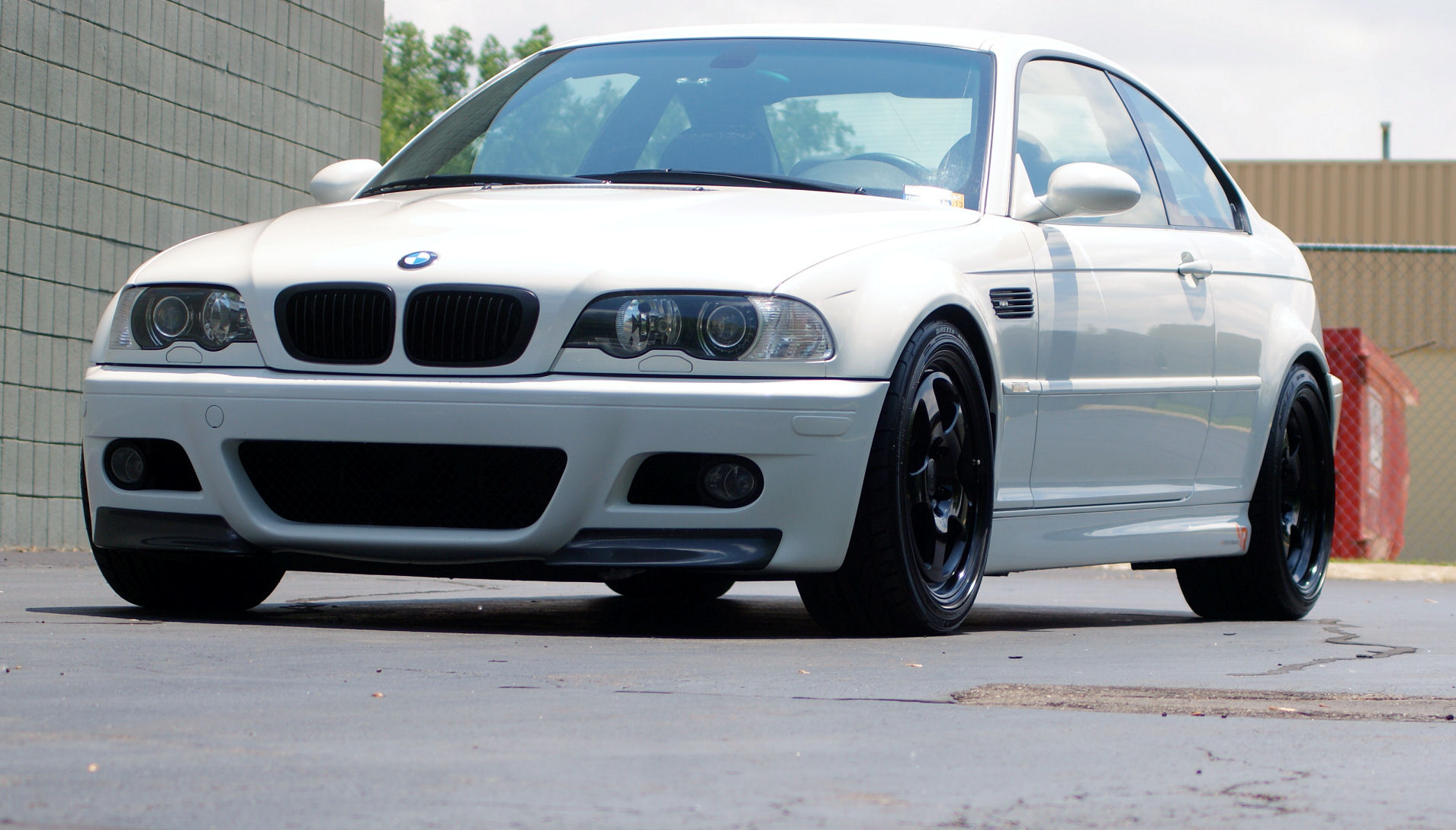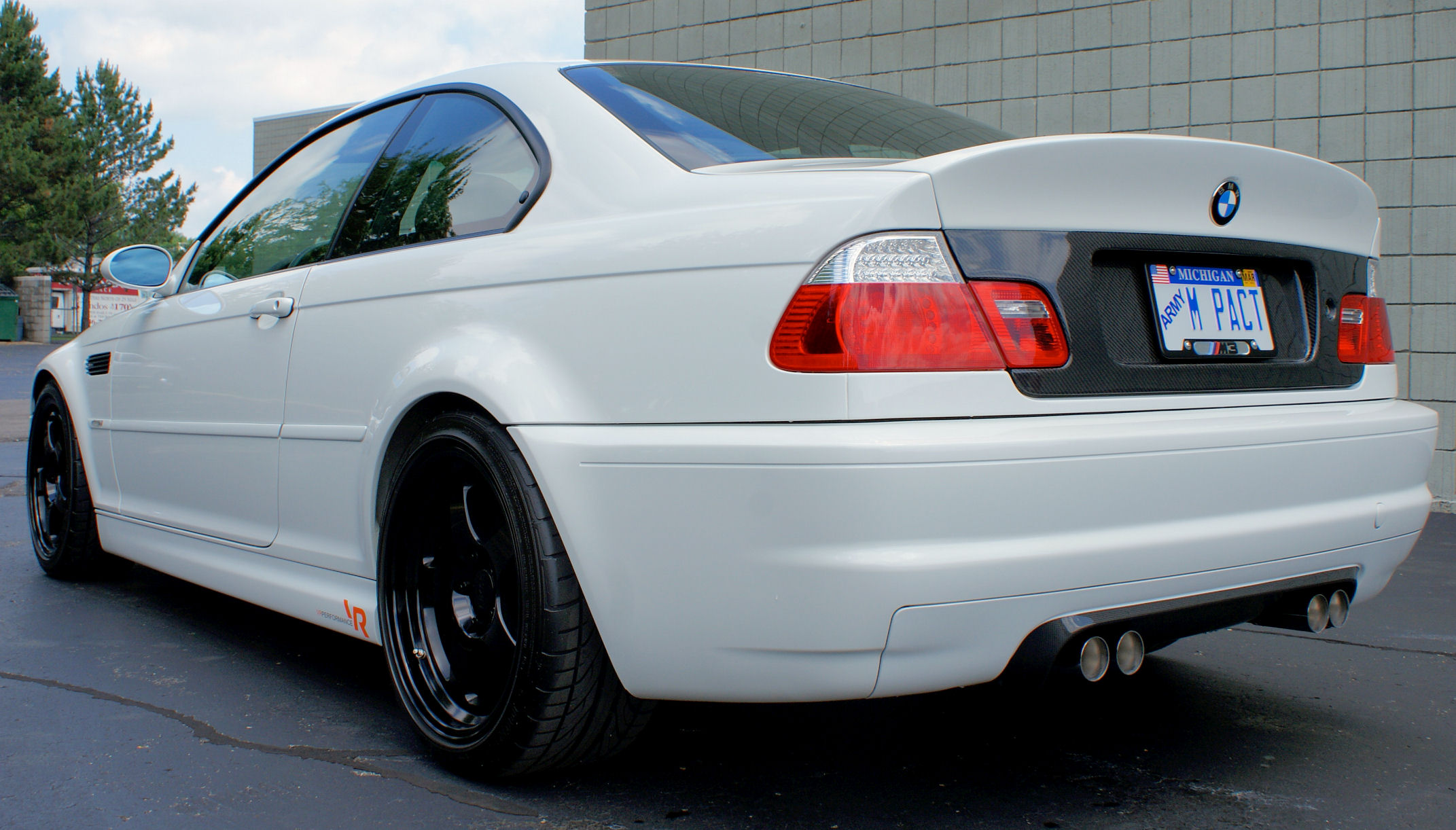E46 M3 GT Part 3
Those who have been following this blog over the years know that I own a 2003 BMW M3 and that I've been slowly upgrading the OEM parts as they need to be replaced. In part 1 I talk about some of the cosmetic changes I made and in part 2 I introduce a new set of wheels. Now onto the suspension…
And if you've been following this blog, you also know that VRPerformance sells TC Kline Racing suspensions, so that's exactly where I went for my car. We've installed many suspensions from many different manufacturers including H&R, Eibach, Moton, TEIN and KW but when it comes to the BMW E46 (and E36, E90+) chassis, there is no better set-up than the TC Kline double adjustable coil-over suspension with front camber/castor plates. The quality of the components is top notch, and the adjustability of the ride height and dampers is straight forward and quite noticeable.
Keeping in mind my "GT" requirements I did not want to ruin the already pretty stiff M3 ride and handling characteristics. But, I track the car every now and again so I did not want soft either. To deal with these conflicting goals I decided to go a bit stiffer on the spring settings, 500 lbs front, 600 lbs rear, but keep the stock sway bars.
Stiff sway bars work great on smooth pavement but really kill the ride on rough roads. Sway bars, or "anti roll bars" as they are sometimes called, link the car's side to side suspension components. In other words, when the outside suspension is compressed in a corner, the sway bar tries to compress the inside suspension as well, thereby effectively stopping the body from rolling. The downside is whatever happens to one side-- hitting a bump or pot hole-- is also transferred to the other side. This tends to hurt the ride. By going with some stiffer springs, I was able to sharpen the handling while still keep each wheel independent-- the better to deal with our terrible public roads.
Another big improvement the TC Kline set-up provides over the OEM suspension is the adjustable dampers. The dampers (struts in front, shock absorbers out back) have about 12 settings for compression and rebound. I'm running the car right about in the middle of the settings and have found the ride to be better than stock. Yes the car is a bit stiffer, but the reactions to the road surface are not as harsh. In other words, exactly what I want for my GT theme.

During our track event back in July I took the newly suspended M3 out for a few hot laps. What a world of difference the TC Kline suspension made. The car settled into the corners much better with excellent initial turn in and controllable oversteer on the exit.
Weight
When I ordered the M3 from BMW I kept in mind its potential track duties, so I tried to go as light-- literally-- on the order form as possible. That meant no heavy sun roof or power seats or other fancy heavy stuff. Optional weight was the enemy. Same went for the new wheels. The two criteria for the aftermarket wheels I purchased last year was lightweight and strength-- which meant multi-piece forged wheels. I went with the best in the business, Fikse. I also swapped out the rear trunk lid with a carbon fiber CSL style version from Vorsteiner. (Both items sold by VRPerformance, by the way). The end result is a car that comes in at only 3258 lbs, unladen (without fuel). That is over 100 lbs lighter than the smaller BMW 135i, and almost 200 lbs lighter than current EVOs and STis. Not bad.
